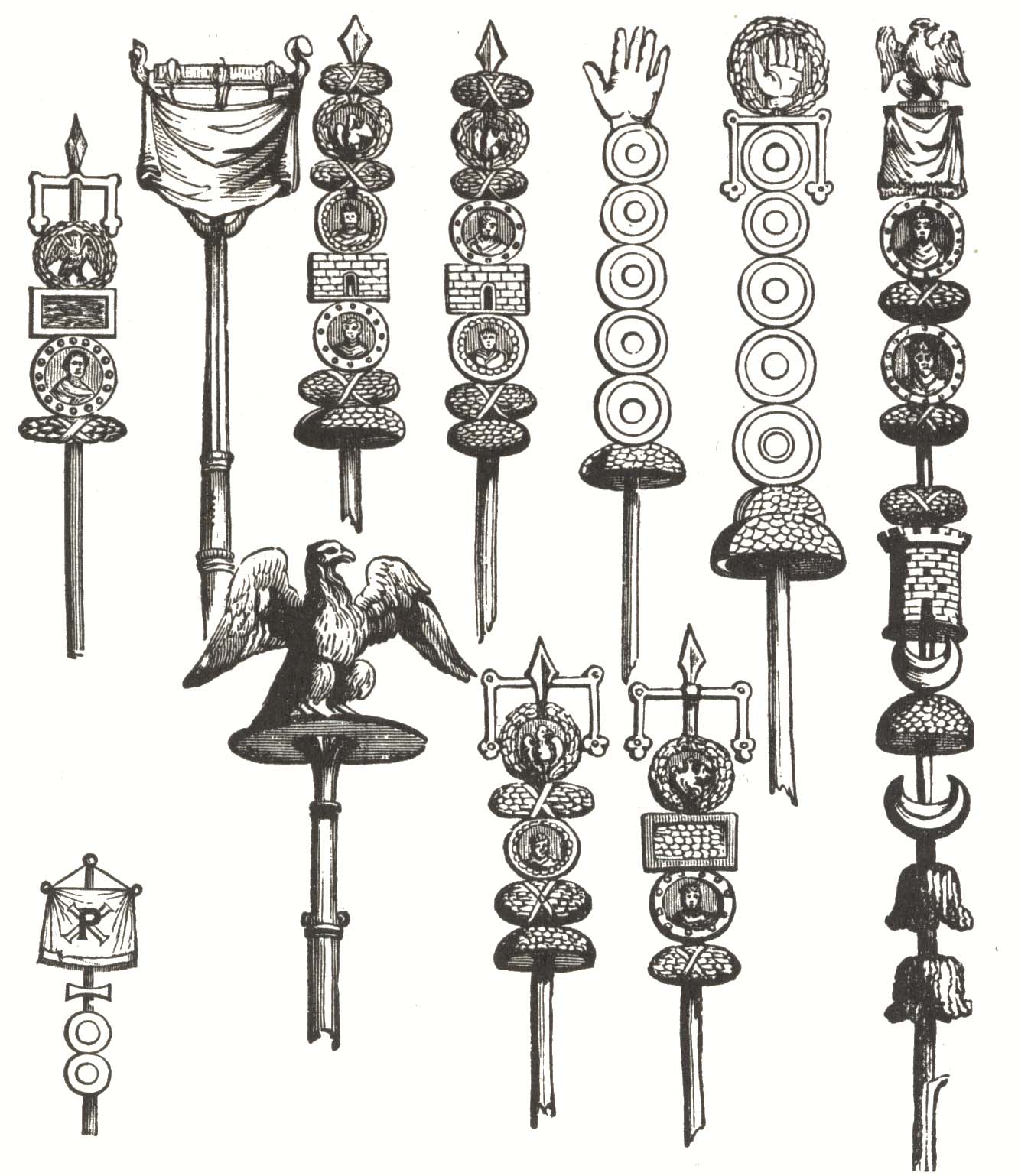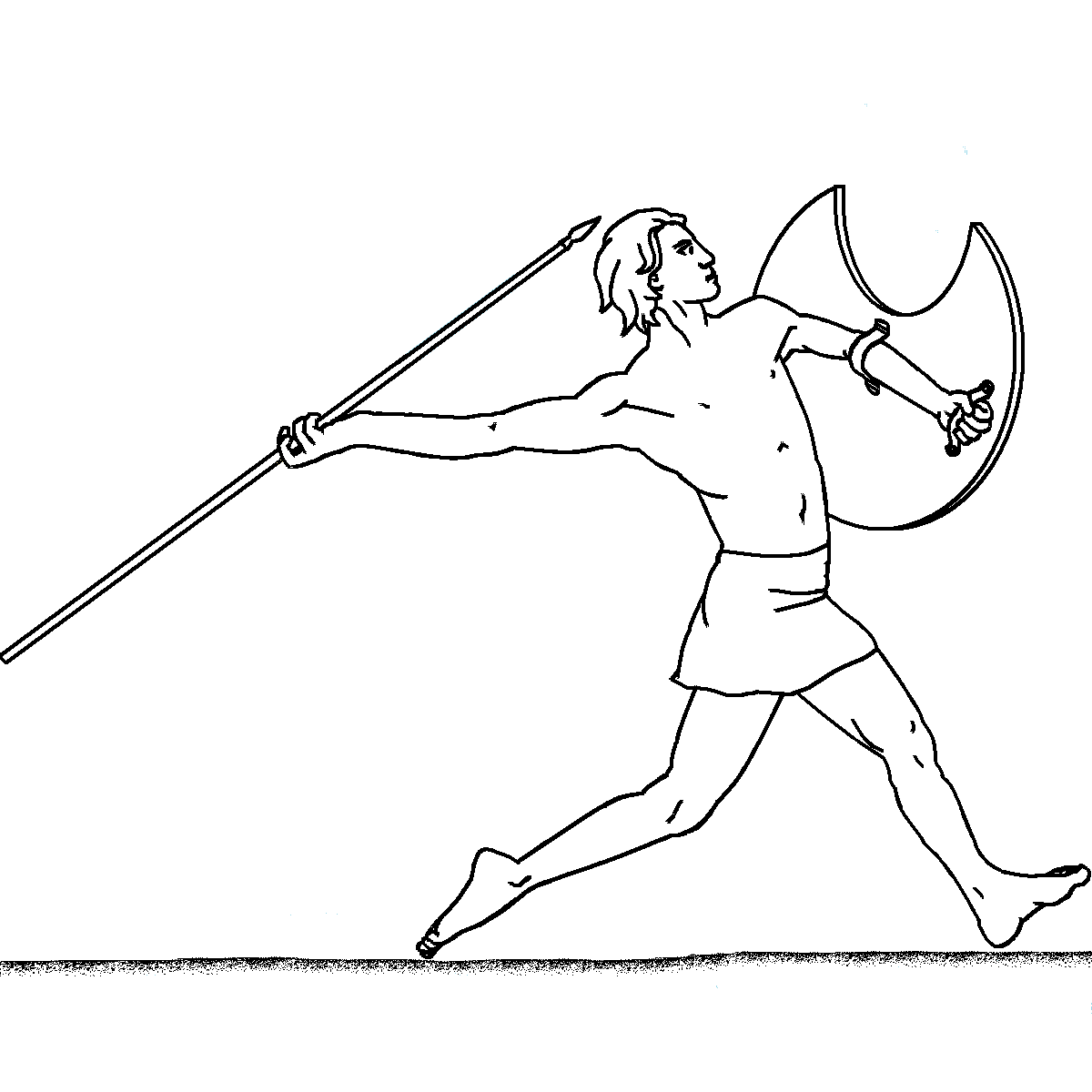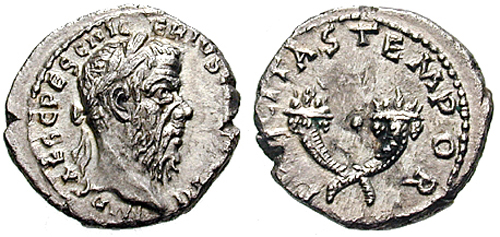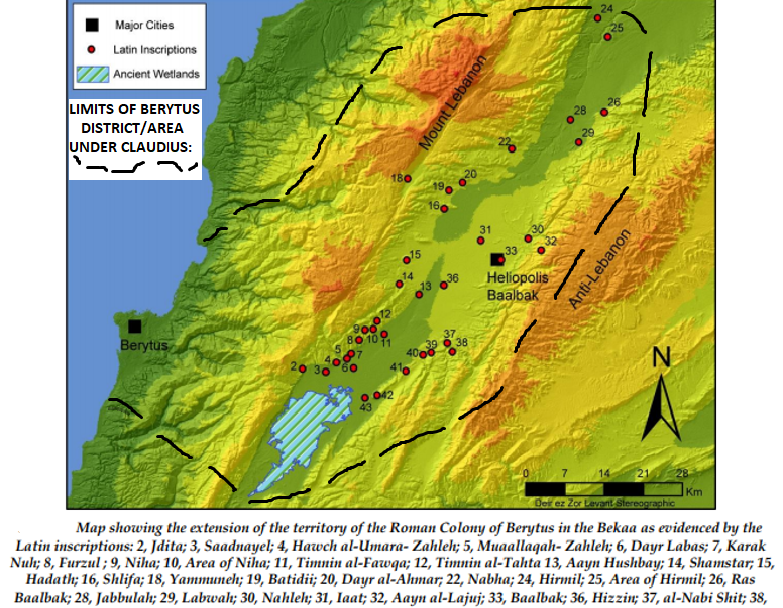|
2nd Century In Lebanon
This article lists historical events that occurred between 101–200 in modern-day Lebanon or regarding its people. Administration Roman emperor Hadrian (reigned 117–138) is said to have considered a division of the overly large province of Syria in 123–124 AD, but it was not until shortly after c. 194 AD that Septimius Severus (r. 193–211) actually undertook this, dividing the province into Syria Coele in the north and Phoenice in the south. The province was much larger than the area traditionally called Phoenicia: for example, cities like Emesa and Palmyra and the base of the Legio III Gallica in Raphanaea were now subject to governor in Tyre. Veterans of this military unit were settled in Tyre, which also received the rank of colonia. War of Succession After the death of the 2nd century Roman emperor Commodus, a civil war erupted, in which Berytus, and Sidon supported Pescennius Niger. While the city of Tyre supported Septimius Severus, which led Niger to send Mauri ... [...More Info...] [...Related Items...] OR: [Wikipedia] [Google] [Baidu] |
Vexilloid Of The Roman Empire
A vexilloid is any flag-like (vexillary) object used by countries, organisations, or individuals as a form of representation other than flags. American vexillologist Whitney Smith coined the term ''vexilloid'' in 1958, defining it as This includes vexilla, banderoles, pennons, streamers, heraldic flags, standards, and gonfalons. Examples include the Sassanid battle standard Derafsh Kaviani, and the standards of the Roman legions such as the eagle of Augustus Caesar's Xth legion and the dragon standard of the Sarmatians; the latter was allowed to fly freely in the wind, carried by a horseman, but depictions suggest that it bore more similarity to an elongated dragon kite than to a simple flag. The use of flags replaced the use of vexilloids for general purposes during late medieval times between about 1100 to about 1400. However, vexilloids still remain in use for specialised purposes, such as for some military units or to symbolise various organisations such as frat ... [...More Info...] [...Related Items...] OR: [Wikipedia] [Google] [Baidu] |
Raphanea
Raphanea or Raphaneae ( grc, Ῥαφάνεια; ar, الرفنية, al-Rafaniyya; colloquial: ''Rafniye'') was a city of the late Roman province of Syria Secunda. Its bishopric was a suffragan of Apamea. History Josephus mentions Raphanea in connection with a river Σαββατικον, referred now to as Sambatiyon that flowed only every seventh days (probably an intermittent spring now called Fuwar ed-Deir) and that was viewed by Titus on his way northward from Berytus after the destruction of Jerusalem in AD 70. Near Emesa, Raphanea was the fortified headquarters of the Legio III Gallica from which was launched the successful bid of 14-year-old Elagabalus to become Roman Emperor in 218. Raphanea issued coins under Elagabalus, and many of its coins are extant. Hierocles and Georgius Cyprius mention Raphanea among the towns of Syria Secunda. The crusaders passed through it at the end of 1099; it was taken by Baldwin I and was given to the Count of Tripoli. It was the ... [...More Info...] [...Related Items...] OR: [Wikipedia] [Google] [Baidu] |
Legatus Augusti Pro Praetore
A ''legatus Augusti pro praetore'' (literally: "envoy of the emperor – acting for the praetor") was the official title of the governor or general of some Imperial provincess of the Roman Empire during the Principate era, normally the larger ones or those where legions were based. Provinces were denoted imperial if their governor was selected by the emperor, in contrast to senatorial provinces, whose governors (called proconsuls) were elected by the Roman Senate. A ''legatus Augusti'' was always a senator of consular or praetorian rank (i.e., who had previously held the office of consul or praetor). However, the position of the governor of Egypt ('' praefectus Aegypti'') was unparalleled, for though an ''eques'' (Roman knight) he had legions under his command. Some smaller imperial provinces where no legions were based (e.g. Mauretania, Thrace, Rhaetia, Noricum, and Judaea) were administered by equestrian ''praefecti'' (prefects) later designated ''procuratores'' (procurators) ... [...More Info...] [...Related Items...] OR: [Wikipedia] [Google] [Baidu] |
Herodian
Herodian or Herodianus ( el, Ἡρωδιανός) of Syria, sometimes referred to as "Herodian of Antioch" (c. 170 – c. 240), was a minor Roman civil servant who wrote a colourful history in Greek titled ''History of the Empire from the Death of Marcus'' (τῆς μετὰ Μάρκον βασιλείας ἱστορία) in eight books covering the years 180 to 238. His work is not entirely reliable although his less biased account of Elagabalus is more useful than that of Cassius Dio. Herodian himself may have been a Syrian (perhaps from Antioch) who appears to have lived for a considerable period of time in Rome, but possibly without holding any public office. From his extant work, we gather that he was still living at an advanced age during the reign of Gordianus III, who ascended the throne in 238. Beyond this, nothing is known of his life. Herodian writes (1.1.3; 2.15.7) that the events described in his history occurred during his lifetime. Photius (Codex 99) gives an ou ... [...More Info...] [...Related Items...] OR: [Wikipedia] [Google] [Baidu] |
Javelin
A javelin is a light spear designed primarily to be thrown, historically as a ranged weapon, but today predominantly for sport. The javelin is almost always thrown by hand, unlike the sling, bow, and crossbow, which launch projectiles with the aid of a hand-held mechanism. However, devices do exist to assist the javelin thrower in achieving greater distance, such as spear-throwers or the amentum. A warrior or soldier armed primarily with one or more javelins is a javelineer. The word javelin comes from Middle English and it derives from Old French ''javelin'', a diminutive of ''javelot'', which meant spear. The word ''javelot'' probably originated from one of the Celtic languages. Prehistory There is archaeological evidence that javelins and throwing sticks were already in use by the last phase of the Lower Paleolithic. Seven spear-like objects were found in a coal mine in the city of Schöningen, Germany. Stratigraphic dating indicates that the weapons are about 400,000 ... [...More Info...] [...Related Items...] OR: [Wikipedia] [Google] [Baidu] |
Mauri
Mauri (from which derives the English term "Moors") was the Latin designation for the Berber population of Mauretania, located in the part of North Africa west of Numidia, in present-day northern Morocco and northwestern Algeria. Name ''Mauri'' (Μαῦροι) by Strabo, who wrote in the early 1st century, as the native name, which was also adopted into Latin, while he cites the Greek name for the same people as ''Maurusii'' (Μαυρούσιοι). The name ''Mauri'' as a tribal confederation or generic ethnic designator thus seems to roughly correspond to the people known as Numidians in earlier ethnography; both terms presumably group early Berber-speaking populations (the earliest Libyco-Berber epigraph dates to about the third century BC). Roman period In 44 AD, the Roman Empire incorporated the region as the province of Mauretania, later divided into Mauretania Caesariensis and Mauretania Tingitana. The area around Carthage was already part of Africa Proconsularis. Ro ... [...More Info...] [...Related Items...] OR: [Wikipedia] [Google] [Baidu] |
Tyre, Lebanon
Tyre (; ar, صور, translit=Ṣūr; phn, 𐤑𐤓, translit=Ṣūr, Greek ''Tyros'', Τύρος) is a city in Lebanon, one of the oldest continually inhabited cities in the world, though in medieval times for some centuries by just a tiny population. It was one of the earliest Phoenician metropolises and the legendary birthplace of Europa, her brothers Cadmus and Phoenix, as well as Carthage's founder Dido (Elissa). The city has many ancient sites, including the Tyre Hippodrome, and was added as a whole to UNESCO's list of World Heritage Sites in 1984. The historian Ernest Renan noted that "One can call Tyre a city of ruins, built out of ruins". Today Tyre is the fourth largest city in Lebanon after Beirut, Tripoli, and Sidon. It is the capital of the Tyre District in the South Governorate. There were approximately 200,000 inhabitants in the Tyre urban area in 2016, including many refugees, as the city hosts three of the twelve Palestinian refugee camps in Lebanon: ... [...More Info...] [...Related Items...] OR: [Wikipedia] [Google] [Baidu] |
Pescennius Niger
Gaius Pescennius Niger (c. 135 – 194) was Roman Emperor from 193 to 194 during the Year of the Five Emperors. He claimed the imperial throne in response to the murder of Pertinax and the elevation of Didius Julianus, but was defeated by a rival claimant, Septimius Severus, and killed while attempting to flee from Antioch. Early career Although Niger was born into an old Italian equestrian family, around the year 135, he was the first member of his family to achieve the rank of Roman senator.Potter, p. 101 Not much is known of his early career; it is possible that he held an administrative position in Egypt, and that he served in a military campaign in Dacia early in Commodus’ reign.Meckler, ''Pescennius Niger'' During the late 180s, Niger was elected as a Suffect consul, after which Commodus made him imperial legate of Syria in 191. He was still serving in Syria when news came of the murder of Pertinax, followed by the auctioning off of the imperial title to Didius ... [...More Info...] [...Related Items...] OR: [Wikipedia] [Google] [Baidu] |
Sidon
Sidon ( ; he, צִידוֹן, ''Ṣīḏōn'') known locally as Sayda or Saida ( ar, صيدا ''Ṣaydā''), is the third-largest city in Lebanon. It is located in the South Governorate, of which it is the capital, on the Mediterranean coast. Tyre to the south and Lebanese capital Beirut to the north are both about away. Sidon has a population of about 80,000 within city limits, while its metropolitan area has more than a quarter-million inhabitants. Name The Phoenician name ''Ṣīdūn'' (, ) probably meant "fishery" or "fishing town". It is mentioned in Papyrus Anastasi I as Djedouna. It appears in Biblical Hebrew as ''Ṣīḏōn'' ( he, צִידוֹן) and in Syriac as ''Ṣidon'' (). This was Hellenised as ''Sidṓn'' ( grc-gre, Σιδών), which was Latinised as '. The name appears in Classical Arabic as ''Ṣaydūn'' () and in Modern Arabic as ''Ṣaydā'' (). As a Roman colony, it was notionally refounded and given the formal name ' to honour its impe ... [...More Info...] [...Related Items...] OR: [Wikipedia] [Google] [Baidu] |
Berytus
) or Laodicea in Canaan (2nd century to 64 BCE) , image = St. George's Cathedral, Beirut.jpg , image_size = , alt = , caption = Roman ruins of Berytus, in front of Saint George Greek Orthodox Cathedral in modern-day Beirut , map = , map_type = Lebanon , map_alt = , map_size = 270 , coordinates = , altitude_m = , altitude_ref = , relief = , gbgridref = , map_dot_label = , location = Beirut, Lebanon , region = , type = Settlement , part_of = , length = , width = , area = , volume = , diameter = , circumference = , height = , builder = , material = , built = Roman republic (merchants from early Laodicea/Berytus recorded by 110–109 BCE) , abandoned = , epochs = Roman and Early Byzantine/late antiquity; previous port dating back to Ir ... [...More Info...] [...Related Items...] OR: [Wikipedia] [Google] [Baidu] |
Commodus
Commodus (; 31 August 161 – 31 December 192) was a Roman emperor who ruled from 177 to 192. He served jointly with his father Marcus Aurelius from 176 until the latter's death in 180, and thereafter he reigned alone until his assassination. His reign is commonly thought of as marking the end of a golden period of peace in the history of the Roman Empire, known as the Pax Romana. Commodus accompanied his father during the Marcomannic Wars in 172, and on a tour of the Eastern provinces in 176. Later that year he became the youngest emperor and consul up to that point, at the age of 15. During his solo reign, the Roman Empire enjoyed reduced military conflict compared with the reign of Marcus Aurelius. Intrigues and conspiracies abounded, leading Commodus to revert to an increasingly dictatorial style of leadership, culminating in his creating a deific personality cult, with his performing as a gladiator in the Colosseum. Throughout his reign, Commodus entrusted the manag ... [...More Info...] [...Related Items...] OR: [Wikipedia] [Google] [Baidu] |







